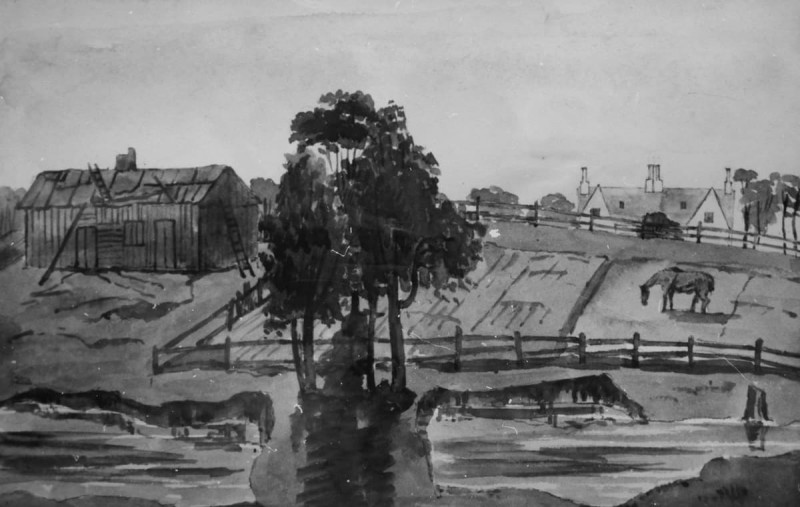Also known as The Swiss Cottages, two semidetached six-roomed stone houses were erected ca 1842 for merchant William Hirst, the owner of Hereford House. In picturesque rustic style, they featured elaborately gabled fronts with bay windows.
Once named Everton, the corner house still stands, hidden behind shops and St James Hall. Past occupiers include illicit distiller Maurice Ickerson, architect Ernest Bonney, violin teacher Francis Peel, bookmaker George Dorsett Wood, and Cockatoo Island engineer William Clark. Before the garden was lost, there was room to keep a St Bernard dog.
Past occupiers of Everton’s twin Carlisle include cartes-devisite photographer Albert Lomer and Edward Johnston, one of the numerous grandsons of Major George Johnston, of Annandale fame. Carlisle was demolished in the 1970s, to be replaced by the Rooftop Travellers Lodge.
William Hirst exported wool and imported wine and cloth. He was probably connected to his namesake in Leeds who bought Australian wool and sold it back to the colonies in the form of fabric. In 1837 he acquired some six acres of Glebe’s Hereford Estate. The next year he bought shares in the India Steam Ship Company and ewes from Samuel Terry’s estate, and swapped merchandise for Maori land in New Zealand. Despite being warned by his Liverpool agent that the international market was depressed, William continued his commercial activities, and in 1843 bought land at Eden.
Hirst fell victim to the 1840s depression. In 1843 he sold The Gothic Cottages to business partners Alexander Campbell and James Nelson Smith and the following year auctioned Hereford House and its contents. Hirst died, aged 36, at Darling Point in 1846. His younger son George Aldborough Prittie established Hirstvale station on the Darling Downs. The elder son, William Henry Abbott, one of Sydney University’s first students, was dismissed from office as a Queensland judge.




